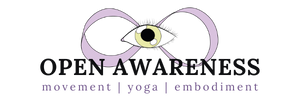28 Sep How to Stop Yourself from Losing It
Looney Toons Tasmanian Devil – property of Warner Bros.
Focus on the areas you can control, and set the rest aside for now.
What does this mean to you?
For me, it means taking life in bite size pieces. Taking the time to settle myself at the eye of the storm, so to speak. Someone once told me to let the Tasmanian Devil keep spinning out around me and watch him from a place of stillness and ease. Can I control Taz? No. Can I control my reaction to Taz? There’s more of a chance at that.
It can be hard, though, right? When someone is barreling through a conversation you’re not ready to have and you feel yourself getting worked up – your heart pounding, muscles twitching (for me, my calves cramp), that out-of-control feeling threatening it’s arrival. What do you do then? Really, how do you handle that?
Here’s what I try for. As soon as I notice I’m getting worked up, I say to myself good job, Quinn, you’ve noticed what you’re feeling! This is because I really thrive off positive reinforcement and sometimes I’m the only one around to give it to me. So I do.
Next, I slow my breathing down. Not by a ton, not so that I feel out of breath. Just a hair, just one smoother, slower exhale. One at a time. Breathing in. Breathing out. If I’m really having a hard time, I might even repeat that to myself. Breathing in. Breathing out. Smoooootttth aaannndddd sloooowww.
That often does the trick. It gets me over the hump and I can carry on being present for whatever is happening.
Sometimes it isn’t enough.
So what next?
Next I put my hand on my chest. Flat palm over heart. Skin to skin is a bonus. There’s also something called a “heart hug,” where I basically grab my left underarm/rib area in my right hand. Like, really, get a nice firm grip. Try it, it’s a totally normal resting position. You could do it and no one would be the wiser.
It’s like I’m soothing a baby, but I’m the baby. And I’m also the soother. The heart hug is quite an effective self-soothing technique for me.
What I’m doing with all this is calming my body, and beneath that, calming my nervous system. If you remember from last week’s blog, the heart-pounding was my sign the I was in my sympathetic nervous system, which also means my ability to think and be rational and self-possessed is slipping.
Recall that the sympathetic nervous system channels your energy into Fight or Flight. We need to be in the parasympathetic Rest and Digest state to think clearly.
The slow smooth exhale is a technique to activate my parasympathetic nervous system. The heart hug is a way to feel safe in my own body, in and of myself. In other words, these practices are physiological self-regulation. Sometimes I think about it as “hacking” my nervous system. Really, I’m just trying not to react, but rather to respond. Ideally with grace and compassion.
I’m much better at maintaining this place of calm with strangers and friends. I think my husband might grade me a C+. So I’m not saying it’s easy. But I can say that with years of practice, my ability to tolerate discomfort has soared. I reflect on how I’ve handled 2020 and realize this to be true. I know I’m not the only one who needs these tools. And since they’re tools anyone can use, I’m really passionate about sharing them.
So that’s why I teach yoga, which is rich with practices that help us cope and thrive in our humanity and amongst other humans (I believe we call this “society.”) In fact, the yoga philosophy gives us a bullet point list of ways to interact with your external environment. They’re called the yamas and in English (Sanskrit), they go a little something like this.
How should I interact with the world around me?
- with no harm (ahimsa)
- with truthfulness (satya)
- without stealing (asteya)
- with moderation (brahmacarya), and
- without greed (aparigraha)
——
Sign up for the Open Awareness Yoga Newsletter
[mc4wp_form id=”1107″]
